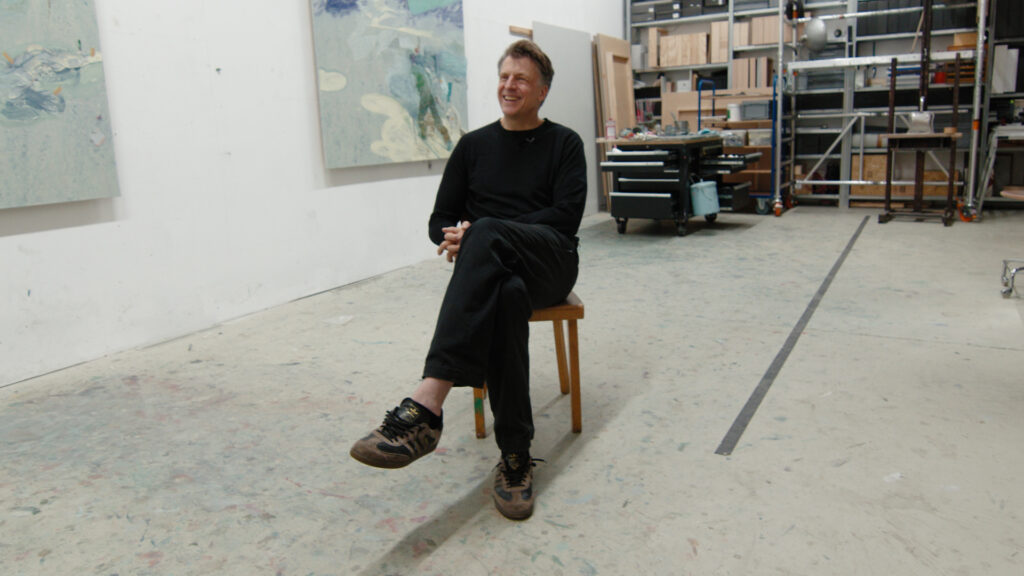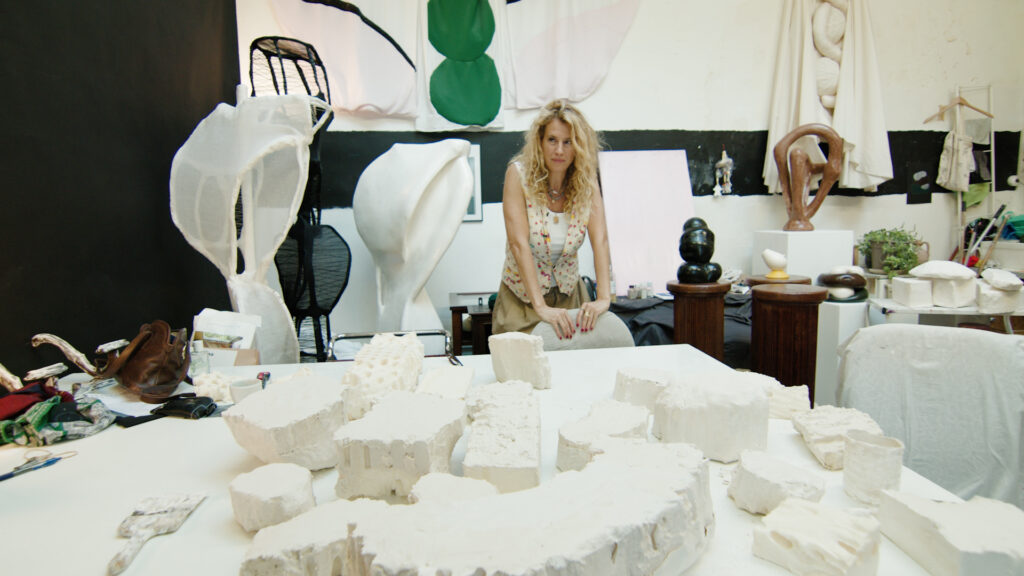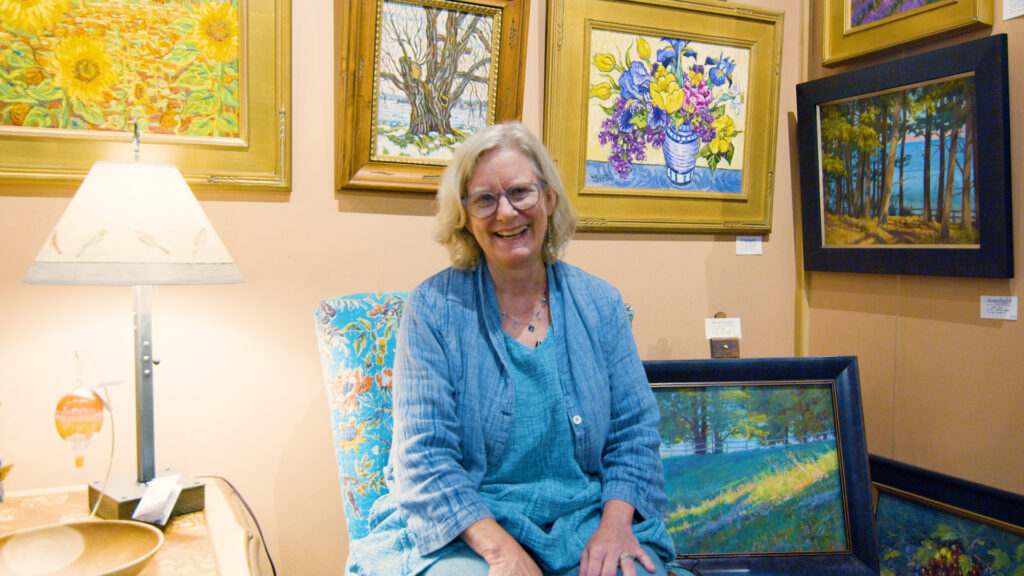In his Berlin studio, Ruprecht von Kaufmann works surrounded by the quiet textures of linoleum, a surface he has made his own. Sheets of it lean against the walls, layered with traces of paint, scratches, and cuts that record both his process and his thoughts. The space feels lived in, not in the cluttered sense, but as an extension of the work itself. A place where painting, carving, and reflection all happen in the same breath.
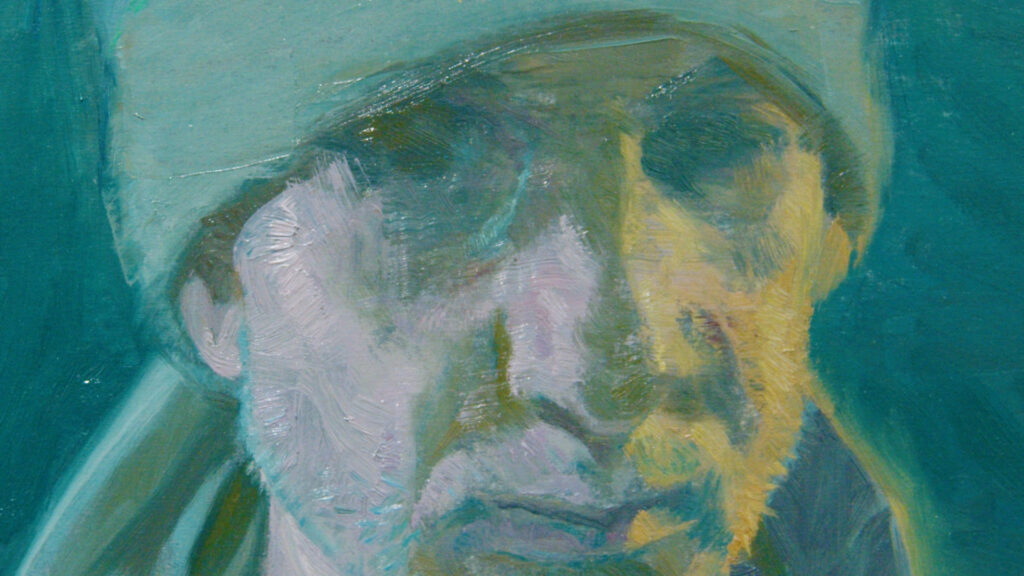
Born in Munich in 1974 von Kaufmann’s journey toward becoming a professional artist was not straightforward. As a teenager, he initially considered other career paths, including veterinary medicine. It was his father who encouraged him to pursue his creative talents, suggesting he explore graphic design. He applied to Art Center, an American school with a campus in Switzerland, starting as a graphic design student. Later, he discovered that the Los Angeles campus offered illustration as a major, which he felt better suited his interests. Moving to LA, he found teachers who were themselves painters and were supportive of him following his own creative instincts, ultimately leading him to become a professional painter.
His early years were filled with an awareness of art’s capacity to hold the contradictions of life its brutality and its beauty, its mystery and its familiarity. This curiosity, tempered by years of meticulous discipline, evolved into a practice defined by both narrative complexity and material experimentation. He describes those early years as a period of intense visual education. “Everything felt new,” he once said, recalling the move from Germany to the United States. “When you are taken out of your world, suddenly you start to see.” That act of seeing—slow, attentive, deliberate—became the foundation of his approach. After graduating, he spent several years working in Los Angeles before returning to Germany, where he would begin to develop the highly personal language that defines his work today.
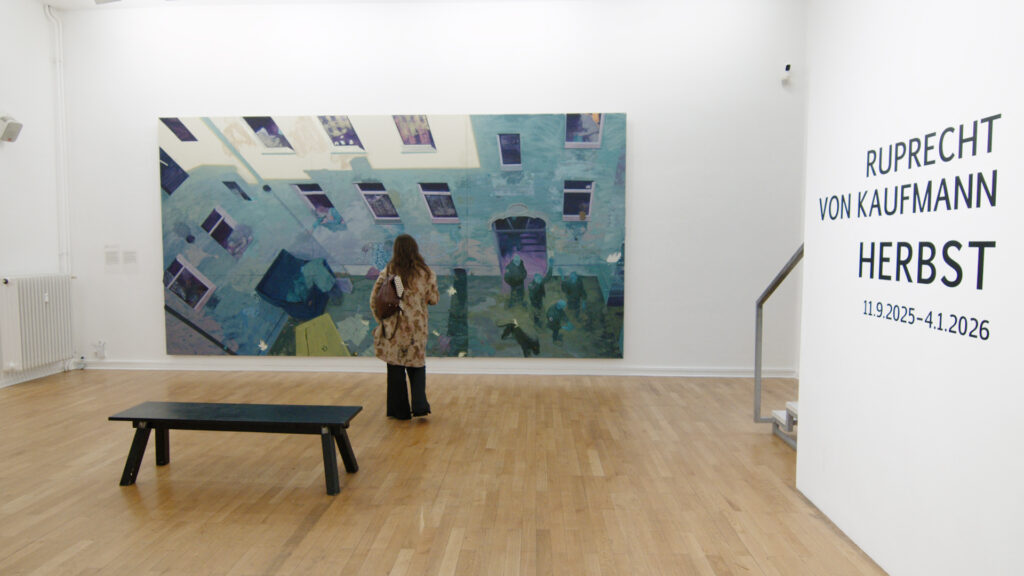
A recurring theme in von Kaufmann’s work is the complexity and unpredictability of human behavior. The ongoing study of people is central to his artistic practice. Human behavior is at the core of his curiosity. He paints people not as idealized subjects but as contradictions in motion, tender and brutal, rational and impulsive. “We can do the most beautiful and the most terrible things,” he’s observed. “Painting is one way to look at that honestly.” Although he describes himself as introverted, his art remains deeply social in its subject matter; it is an ongoing study of how people relate to one another and to themselves.
Von Kaufmann places importance on formal art education. He values art school as a period for exploration and self-discovery, a safe environment where artists can develop their style without needing to justify every decision. However, he emphasizes that graduating is just the beginning, and true learning continues when navigating the professional art world, defending one’s work, and maintaining creative vitality over the long term.
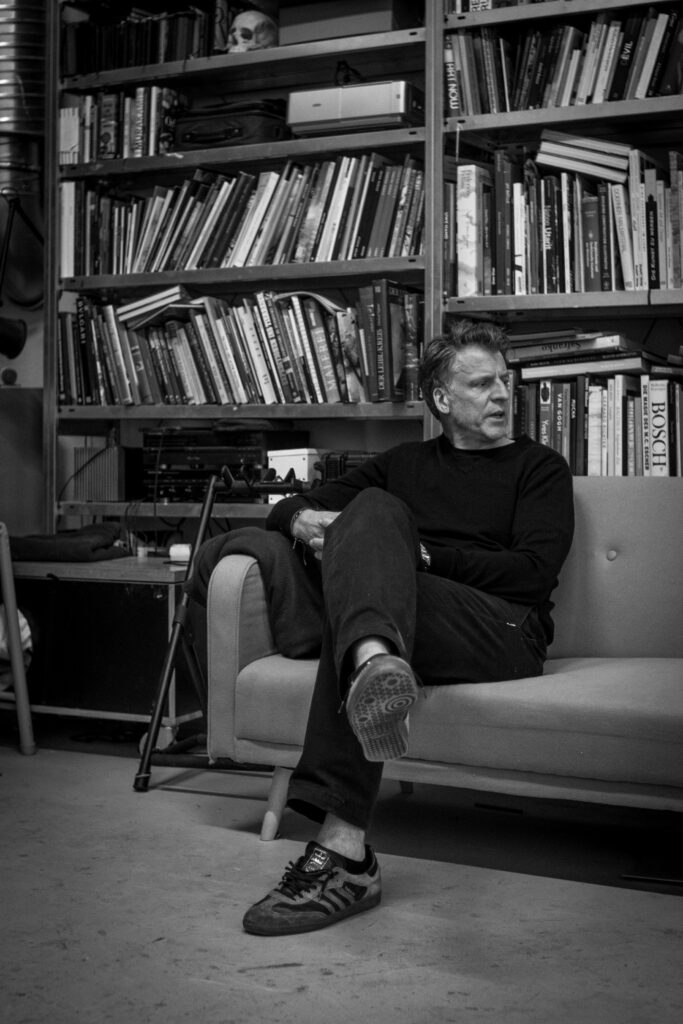
His process always begins with preparation. Sketchbooks fill with studies of composition and gesture. He experiments with how figures occupy space, how light directs attention, how movement carries emotion. “If the composition doesn’t work, nothing else matters,” he insists. Even as he values spontaneity, he knows that structure is what gives freedom its meaning. Once the composition is resolved, he transfers the drawing to the panel and begins painting, letting intuition take over. The paint itself often leads him in unexpected directions.
Although his paintings are often categorized as figurative, the figures themselves are never static. They drift through fragmented rooms, dissolve into water, melt into shadow. Von Kaufmann has said that narrative enters his work “like a ghost,” never announced but always present. Von Kaufmann’s medium of choice is oil paint. He appreciates its slower drying time, which allows for revisions, and its textural qualities, which enhance the physicality of his work. For over a decade, he has primarily painted on linoleum panels. This choice was initially influenced by chance: linoleum samples from home renovations were available in his studio, and he began experimenting with them. The material allows him to work intensively, carving into surfaces, layering paint, and creating depth. Although unconventional, he continues to use linoleum because it supports his particular style and process. When he discovered linoleum, something clicked. The surface resisted the brush and absorbed paint unevenly, forcing him to work differently. “It has this industrial coldness to it,” he said. That physicality changed the rhythm of his process.

That persistence has carried him through decades of exploration. After settling in Berlin, von Kaufmann began exhibiting widely across Europe and the United States. His paintings have been featured in major group exhibitions and collected by institutions across Europe. His work often examines the fragile line between personal experience and collective history. He has painted soldiers, refugees, lovers, and anonymous figures caught in acts of care or violence. “I think painting is a way to understand what’s happening around me,” he once said. “When I’m painting, I’m trying to make sense of the world.” It’s not confession he’s after, but comprehension, an attempt to hold chaos still long enough to look at it clearly.
Teaching is another significant aspect of von Kaufmann’s life. He enjoys working with students, helping them develop their skills and understand their artistic path. Emphasizing the importance of learning to talk about one’s work, a skill often neglected in art schools. He also advises students to recognize that not all feedback will be positive, but that there will always be an audience that appreciates their vision.

Through his teaching, von Kaufmann seeks to instill these values in his students: commitment to craft, exploration of ideas, and perseverance. He encourages young artists to understand that their path will involve both setbacks and breakthroughs and that cultivating a long-term vision for their work is essential. Learning to communicate about their work and find an audience that resonates with it is a critical skill he emphasizes.
He has reflected on the discipline that sustains his process. “I work every day,” he said. “I think art is a craft before it becomes anything else.” That sense of craftsmanship, learned during his years in formal training, continues to anchor his practice even as his themes expand. “Even if I’m just sitting there looking, it’s part of the job.”
Thematically, von Kaufmann often explores the relationship between humans and nature. He examines how humanity perceives itself as separate from or dominant over the natural world, and the ways in which this perspective shapes our actions. He has created dialogues with historical artists, such as Otto Dix, reflecting on social and political conditions across time. His work examines continuity and change, exploring how historical insights can inform contemporary understanding. He states, painting is a way of communicating ideas that language can’t easily reach. He describes the sensation of looking at a Rembrandt and feeling as if he’s having a direct conversation with someone who lived centuries ago. “When a painting moves me, I feel I’m meeting the person behind it,” he once said. “It’s a kind of time travel.” That desire to connect, to reach a viewer across distance and experience, continues to guide his practice.
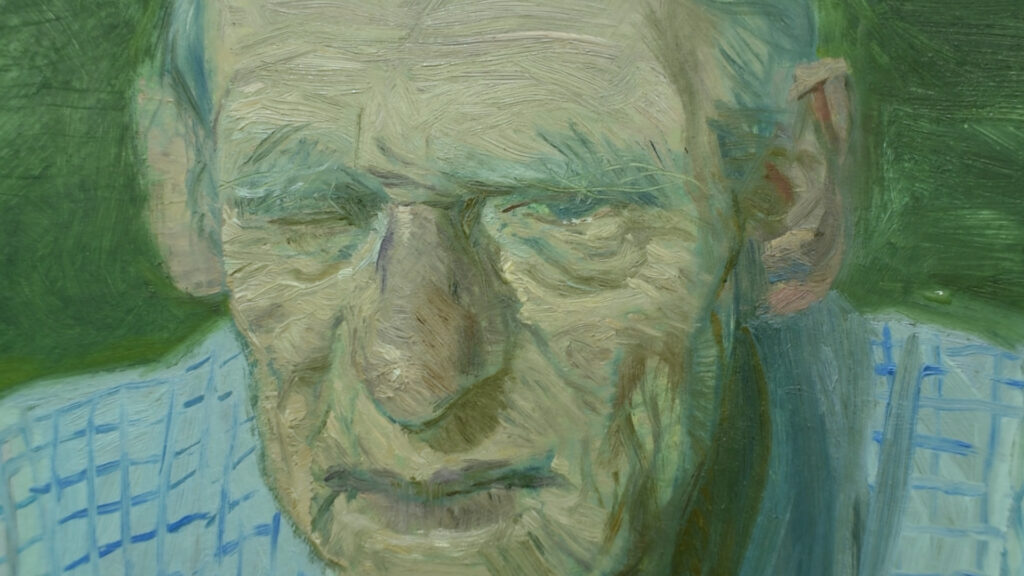
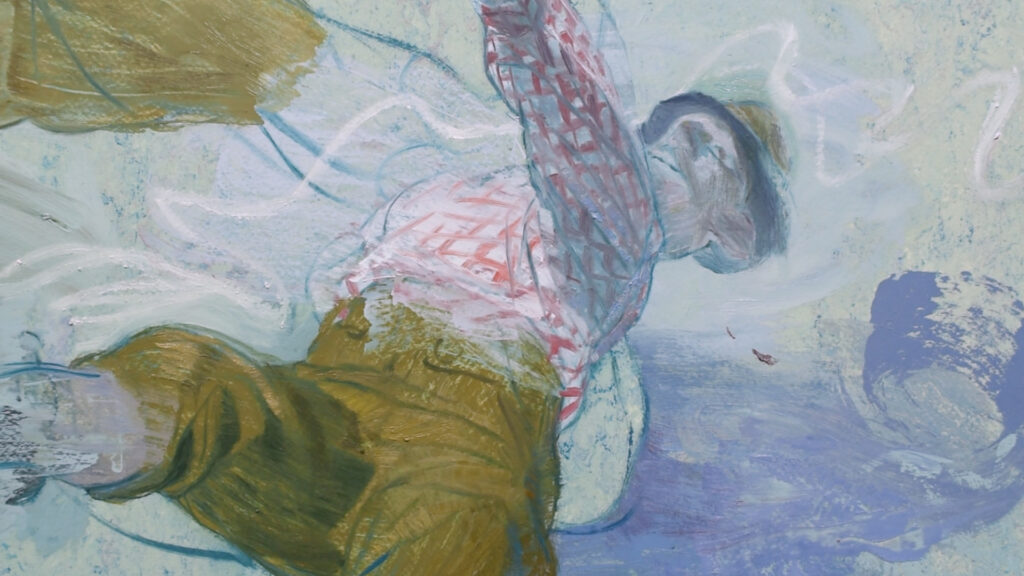
When asked what advice he gives younger artists, von Kaufmann emphasizes persistence. “You have to keep showing up,” he said. “There will be days when nothing works. That’s part of it.” He encourages them to maintain curiosity, to question their assumptions, and to protect the joy of making even when external recognition is uncertain. For him, success is measured less by exhibitions or sales than by the ability to keep exploring honestly.
His philosophy of art returns repeatedly to the idea of connection. Whether he’s looking at an old master painting or one of his own works in progress, he measures its success by the quality of engagement it provokes. “If a painting makes someone stop and feel something, even briefly, then it’s doing its job,” he said. In that moment, artist and viewer share a kind of silent conversation, bridging time and perspective.

Von Kaufmann’s story is one of sustained commitment rather than sudden revelation. Each decision—from changing majors to adopting new materials—emerged naturally from circumstance and curiosity. What unites his path is the steady conviction that painting remains an essential way of thinking about being human. His surfaces carry not only pigment and texture but the record of questioning, revision, and persistence.
Today, as he continues to paint, teach, and exhibit, von Kaufmann speaks with humility about the balance between mastery and uncertainty. “You never really arrive,” he said. “Each painting starts from zero again.” That acceptance of uncertainty, far from discouraging him, fuels his desire to keep working. In every piece he begins, he looks for something just beyond his current understanding—a new way to see, to feel, to connect.
Through decades of practice, Ruprecht von Kaufmann has built a career that resists easy categorization. His paintings move between realism and imagination, discipline and experimentation, solitude and communication. They reflect an artist who continues to ask what painting can do in an age of fleeting images. His answer, given quietly through his work, is that painting still matters because it slows us down, asks us to look closely, and invites us into dialogue—one human being speaking to another, across the surface of time.

Help support Timestamp (we’re an Amazon Associate) when you buy art supplies with our affiliate links (we earn a small commission at no extra cost to you):
Shop for Linoleum: https://amzn.to/3J9SAtP
Shop for Oil Paint: https://amzn.to/49a3RoD
Shop for Printmaking Tools: https://amzn.to/3X0AKMV
Shop for Linoleum Carving Tools: https://amzn.to/4oaaPhN
Shop for Canvas: https://amzn.to/4nG9q1I
Shop for Brushes: https://amzn.to/4nJQJdQ
Sebastien Jupille
Sébastien Jupille’s story begins simply. As a kid he drew constantly, not because anyone pushed…
Eva Dixon
From the beginning, Eva Dixon’s relationship to making things was tied to the rhythms of…
Marc Sparfel
Marc Sparfel’s story begins with an act of discovery, the kind that happens quietly, without…
Ruprecht von Kaufmann
In his Berlin studio, Ruprecht von Kaufmann works surrounded by the quiet textures of linoleum,…
Amélie Caussade
Amélie’s journey as an artist began unexpectedly, born from a moment of sudden disruption. In…
Julie Stoppel
Julie Stoppel never planned to become an art teacher, or a gallery owner for that…




